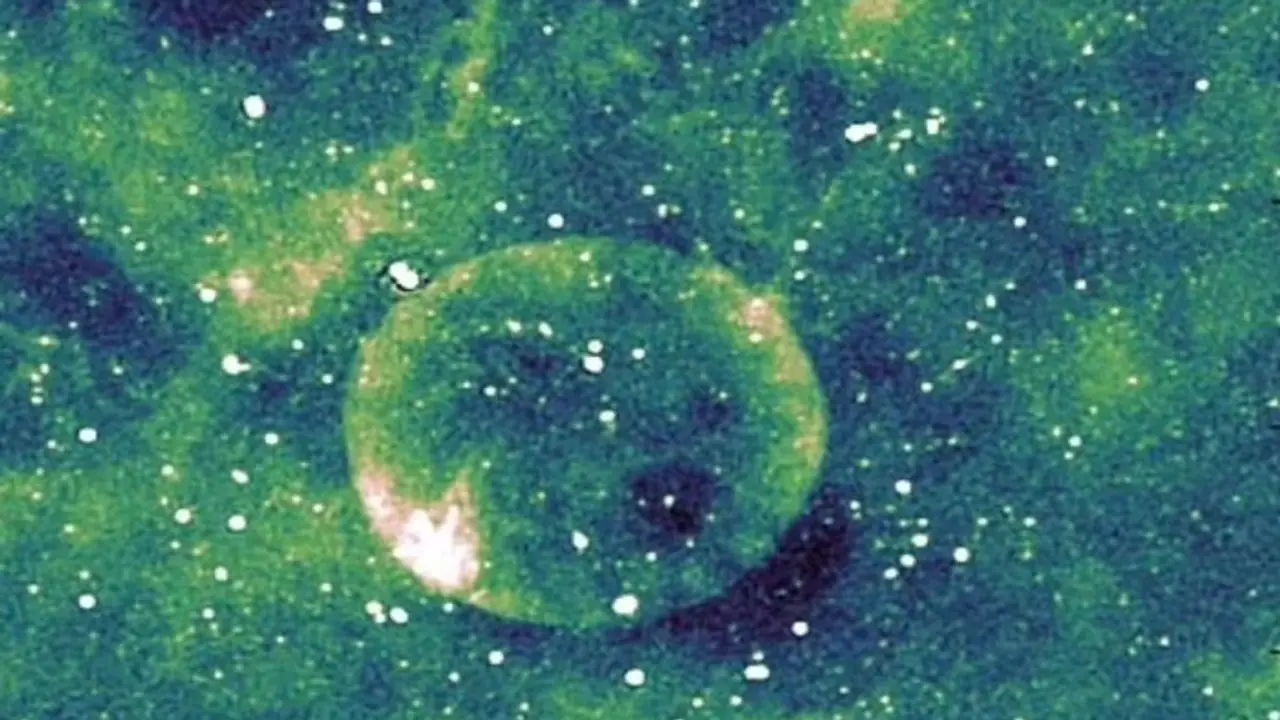Astronomers have discovered a huge, perfectly round object called Teleios emitting only radio waves from deep within our galaxy. Its mysterious shape and unknown origin have baffled scientists, who now seek deeper observations to understand it.
Astronomers are baffled after discovering a mysterious, perfectly round object in space that’s emitting radio waves. This enormous sphere, named Teleios, is like nothing scientists have seen before.

The discovery was made by ASKAP, the Australian Square Kilometre Array Pathfinder, a powerful network of radio telescopes located in the desert of Western Australia. Even though Teleios lies within our own Milky Way galaxy, it is thousands of trillions of miles away and completely invisible to the naked eye.
What makes Teleios so unusual is its remarkably circular shape and the fact that it can only be detected through radio waves—the longest waves in the electromagnetic spectrum. It cannot be seen in visible light, infrared, or X-rays, which is what astronomers typically use to study space.
Why is Teleios unique?
The team of researchers, led by astrophysicist Miroslav Filipovic from Western Sydney University, said they were astonished by the object's “near-perfect symmetry”. They named it Teleios, a Greek word meaning “perfect” or “complete”, to reflect its ideal spherical form.
“The most obvious characteristic of Teleios is its remarkable circular symmetry, coupled with low surface brightness,” the scientists explained.
ASKAP’s advanced radio technology was the only reason the object was even found and no previous telescope had picked it up in any form. This highlights ASKAP’s ability to uncover entirely new classes of space objects.
How big is it?
Scientists estimate that Teleios is around 157 light-years wide, making it extremely large. Images of the object appear as fuzzy blue and green rings, barely visible even with the most sensitive radio instruments.
What could Teleios be?
So far, scientists don’t know for sure what Teleios is. One leading theory is that it may be the remains of a Type Ia supernova—an explosion of a star that doesn’t completely destroy the core, leaving behind a so-called “zombie star” or white dwarf remnant.
In their research paper, scientists said, “We explored all possible stages of supernova evolution based on brightness, size, and estimated distance. But each theory has issues, especially due to the lack of X-ray emissions we’d normally expect.”
In short, even the most likely explanation, the Type Ia supernova, doesn’t fully match what astronomers are seeing. The absence of X-ray signals is a key problem, and scientists admit they can’t confirm anything yet.
What happens next?
The discovery of Teleios is a big mystery in space science. Researchers say they will need more sensitive and high-resolution observations to better understand what Teleios truly is.
This new finding shows how much more there is to learn about the universe. Even within our own galaxy, strange and unexplained objects continue to surprise scientists.
As technology improves and telescopes like ASKAP explore deeper into space, we may find more objects like Teleios or finally unlock its secrets.


